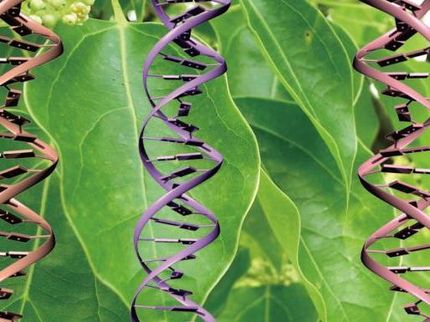Protein & Sugar - Bacteria's Proven Recipe for Survival
Adverse conditions for survival may have an impact on the arrangement of important bacterial genes. Researchers at the University of Natural Resources and Applied Life Science in Vienna discovered that three strains of bacteria adapted to increased temperatures had genes for coping excellently with environmental conditions directly next to one another on the genome. These genes are responsible for attaching sugars to proteins to effect a change in their properties for building up a specific protective coat. Two projects supported by the Austrian Science Fund FWF are investigating details of this process and the results of these studies may also make it possible to produce optimized proteins for biotechnological and medical usage.
Until recently, conventional knowledge stated that only multicellular organisms were capable of modifying proteins by attaching sugars to what are known as glycoproteins. However, we have been aware of the fact for several years that bacteria can do this as well. What's more, the protein functions developed in this fashion can provide them with an important advantage in the fight for survival.
Sugar is the Key
For several years, the team of Professor Paul Messner at the Centre for NanoBiotechnology of the University of Natural Resources and Applied Life Science has been researching the complex mechanism for glycosylation in bacteria, i.e. how sugar residues are attached to proteins. The researchers have specialised in what are known as S-layer proteins that form a surface layer around the cellular membrane of the bacterium. We may assume that this is what protects it from unfavourable environmental influences. Professor Messner remarks that "a part of these functions may be mediated by sugars bonded to proteins, which means that this glycosylation may modify the biological function of the proteins for the organism."
The scientists have identified the machinery required for glycosylation on a gene level with three bacterial organisms living under increased temperatures. These three bacterial strains belong to the group of Gram-positive bacteria that differ from Gram-negative bacteria in the way their cell wall is built up. They found 15 to 30 genes arranged in a cluster depending upon the strain of bacteria studied. This means that they are localised directly after one another on the genome. Amazingly enough, the genes in the cluster are not arranged strictly according to function, as is known from other clusters. This "natural chaos" with the species studied may be attributable to the genes in the cluster being transferred during evolution one after another from Gram-negative to Gram-positive bacteria, which indicates sequence comparisons of various species of bacteria. Professor Messner believes that "the Gram-positive bacteria were probably able to profit from these subsequently added genes by developing an advantage in their competitive natural living space. One of the reasons for believing this is the observation that the bacteria use this glycosylation function primarily where there are unfavourable environmental conditions."
The project's next step is to provide greater detail on the function of the genes responsible for linking sugar residues. Professor Messner describes the process as follows: "We transcribe the individual genes into their proteins (enzymes and transporters) and analyse their function in detail. The insights we gain in this process allow us to develop a better understanding of the intricate interactions going on during glycosylation".
Tailor-made Glycoproteins
Arguably, a knowledge of this interaction will also form the basis for intelligent utilisation of glycosylation, thus allowing us to apply it in biotechnology and medicine. The trouble with the methods previously applied for producing glycosylated proteins in bacteria is the fact that they are often glycosylated insufficiently or improperly, which reduces their biological activities. However, modifying the gene sequences (known as carbohydrate engineering) will allow us to create bacterial proteins with a tailor-made sugar structure in the future.
This potential for biotechnological and medical application show that the FWF projects on protein glycosylation are necessary to first have a fundamental understanding of natural processes to apply innovative technologies.






















































